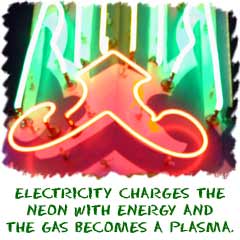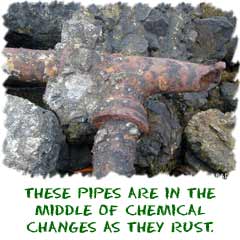Chemical vs. Physical Changes
 It is important to understand the difference between chemical and physical changes. The two types are based on studying chemical reactions and states of matter. We admit that some changes are obvious, but there are some basic ideas you should know. Physical changes are about energy and states of matter. Chemical changes happen on a molecular level when you have two or more molecules that interact and create a new molecule or two.
It is important to understand the difference between chemical and physical changes. The two types are based on studying chemical reactions and states of matter. We admit that some changes are obvious, but there are some basic ideas you should know. Physical changes are about energy and states of matter. Chemical changes happen on a molecular level when you have two or more molecules that interact and create a new molecule or two. When you step on a can and crush it, you have forced a physical change. The shape of the object has changed. It wasn't a change in the state of matter, because the energy in the can did not change. When you melt an ice cube (H2O), you have also forced a physical phase change by adding energy. That example caused a change in the state of matter. You can cause physical changes with forces like motion, temperature, and pressure.
Looking at Molecules
 Chemical changes happen on a much smaller scale. While some experiments show obvious chemical changes, such as a color change, most chemical changes that happen between molecules are not seen. When iron (Fe) rusts, you can see it happen over a long period of time. The actual molecules have changed their structure (the iron oxidized). Melting a sugar cube is a physical change, because the substance is still sugar. Burning a sugar cube is a chemical change. Fire activates a chemical reaction between sugar and reactions (O2). The oxygen in the air reacts with the sugar, and the chemical bonds are broken.
Chemical changes happen on a much smaller scale. While some experiments show obvious chemical changes, such as a color change, most chemical changes that happen between molecules are not seen. When iron (Fe) rusts, you can see it happen over a long period of time. The actual molecules have changed their structure (the iron oxidized). Melting a sugar cube is a physical change, because the substance is still sugar. Burning a sugar cube is a chemical change. Fire activates a chemical reaction between sugar and reactions (O2). The oxygen in the air reacts with the sugar, and the chemical bonds are broken. Some chemical changes are extremely small. They happen over a series of steps. The result might have the same number of atoms, but it will have a different structure or combination of atoms. The sugars glucose, galactose, and fructose all have six carbon atoms, twelve hydrogen atoms, and six oxygen atoms (C6H12O6). Even though they are made of the same atoms, they have very different shapes and are called structural isomers. Those isomers have atoms bonded in different orders. Also, each of the sugars goes through different chemical reactions because of the differences in their molecular structure. Scientists say that the arrangement of atoms allows for a high degree of specificity, especially in the molecules you find in living
things.
A physical property is an aspect of matter that can be observed or measured without changing it.
- Examples of physical properties include color, molecular weight and volume.
A chemical property may only be observed by changing the chemical identity of a substance. This property measures the potential for undergoing a chemical change.
- Examples of chemical properties include reactivity, flammability and oxidation states.
Physical changes involve states of matter and energy.
- No new substance is created during a physical change, although the matter takes a different form.
- The size, shape, and color of matter may change.
- Also, physical changes occur when substances are mixed, but don't chemically react. One way to identify a physical change is that such a changes may be reversible, especially phase changes. For example, if you freeze an ice cube, you can melt it into water again.
This is a list of 10 examples of physical changes.
- crushing a can
- melting an ice cube
- boiling water
- mixing sand and water
- breaking a glass
- dissolving sugar and water
- shredding paper
- chopping wood
- mixing red and green marbles
- sublimating dry ice
Chemical changes involve chemical reactions and the creation of new products. Typically, a chemical change is irreversible.
This is a list of 10 examples of chemical changes.
- rusting of iron
- combustion (burning) of wood
- metabolism of food in the body
- mixing an acid and a base, such as hydrochloric acid (HCl) and sodium hydroxide (NaOH)
- cooking an egg
- digesting sugar with the amylase in saliva
- mixing baking soda and vinegar to produce carbon dioxide gas
- baking a cake
- electroplating a metal
- using a chemical battery